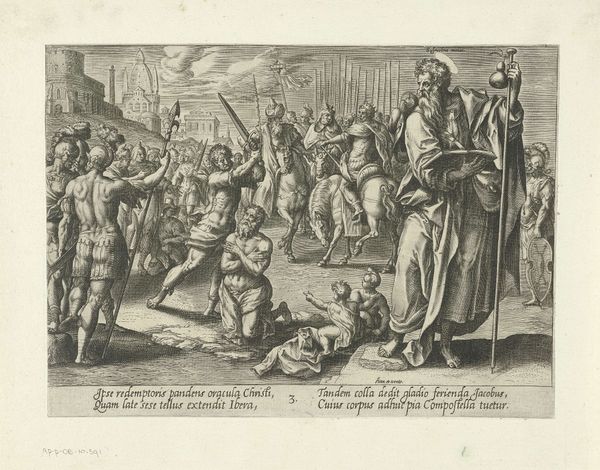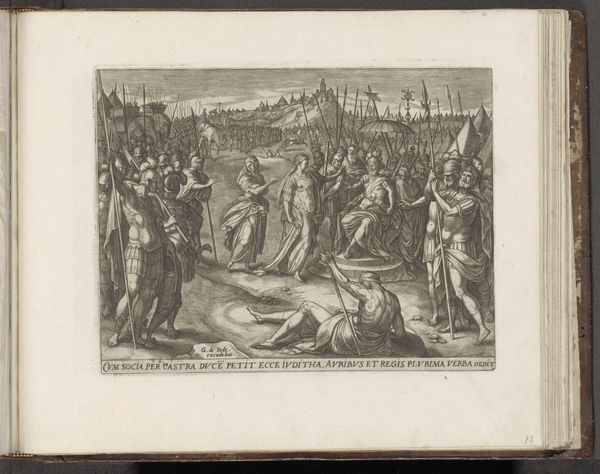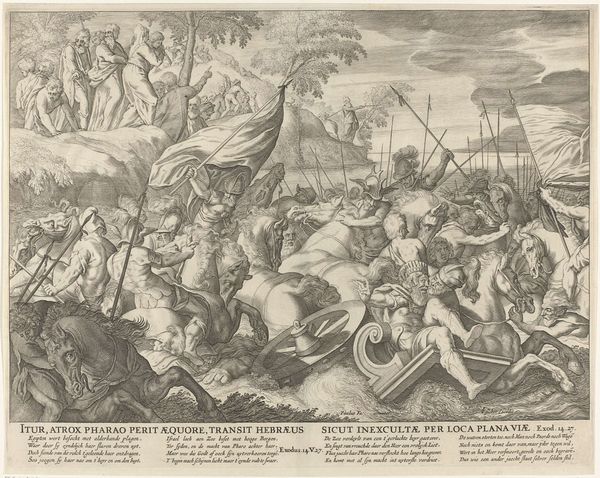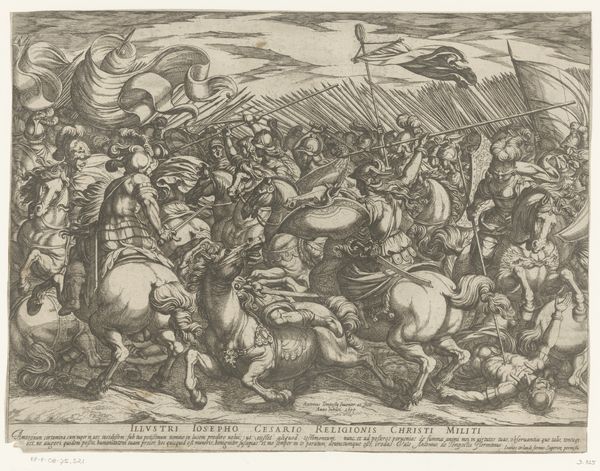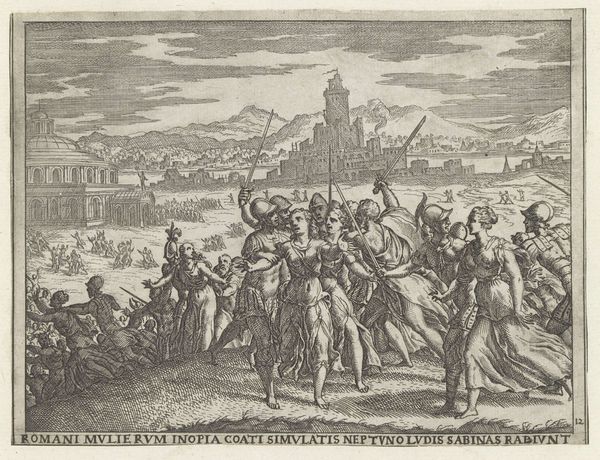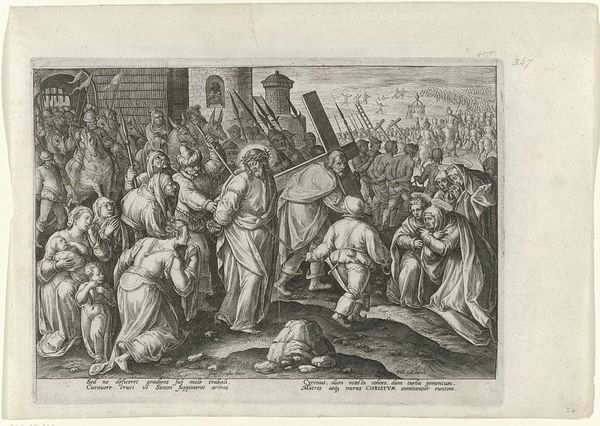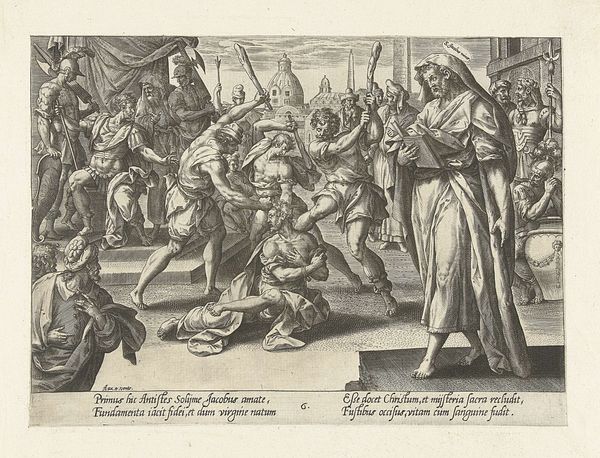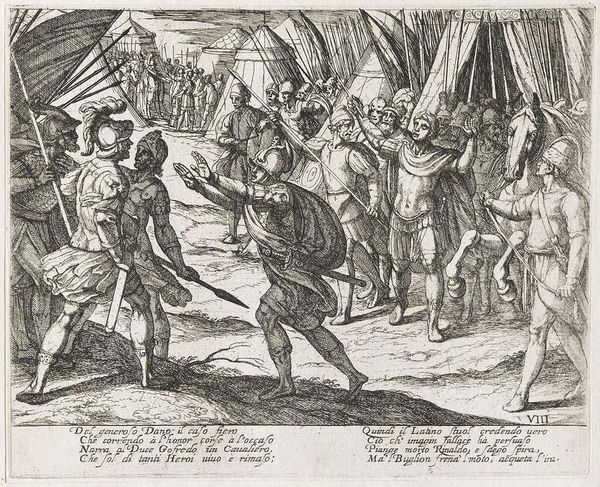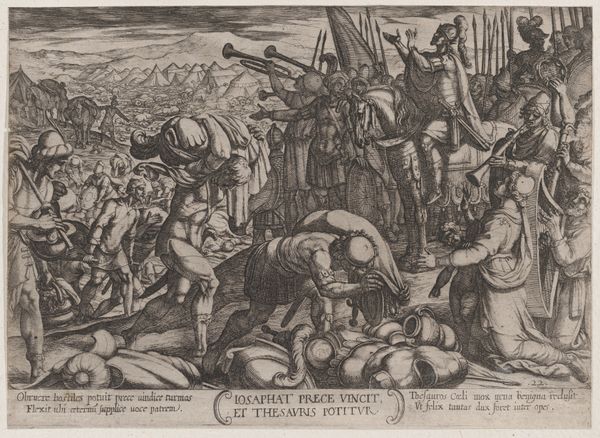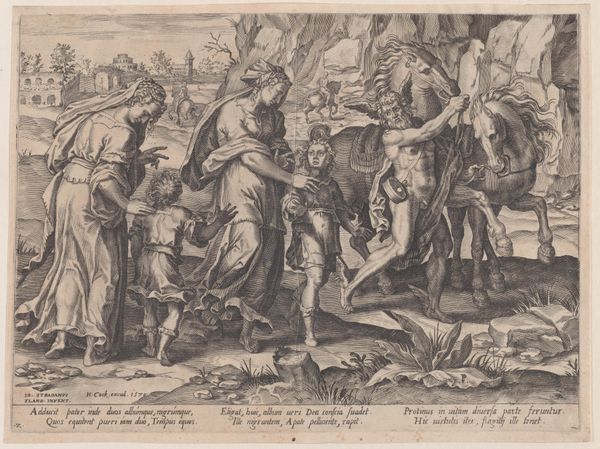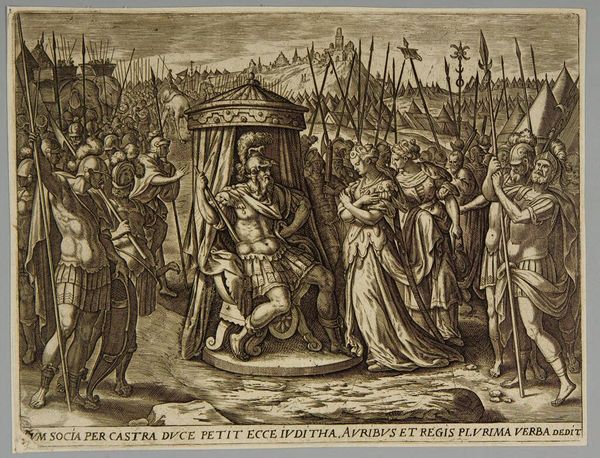
Dimensions: height 201 mm, width 261 mm
Copyright: Rijks Museum: Open Domain
This print, "Judit in kamp van Holofernes," was made by Gerard de Jode sometime in the 16th century. The process behind it is crucial to its impact. De Jode used engraving, meticulously cutting lines into a metal plate, which was then inked and printed. The fine lines and detailed textures achieved through engraving give the scene a sense of depth, drawing us into the biblical drama. Consider the labor involved, the hours of focused work to translate the story into a visual narrative. This wasn't just art; it was a means of disseminating stories and moral lessons to a wider audience. The print medium itself speaks to broader social issues. Prints were more accessible than paintings, democratizing art and knowledge. De Jode's skill, honed through years of practice, demonstrates the value placed on craftsmanship. Understanding the materials and techniques used to create this print deepens our appreciation and challenges the traditional hierarchy between fine art and craft.
Comments
No comments
Be the first to comment and join the conversation on the ultimate creative platform.
